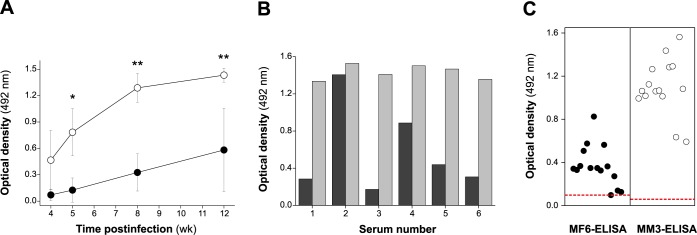Fig 8. Comparative study of the antibody response obtained in sheep infected with F. hepatica against nMF6p/FhHDM-1 and L-cathepsins in capture ELISAs.
A) Mean antibody response to nMF6p/FhHDM-1 (filled circles) and to L-cathepsins (unfilled circles) of infected sheep (n = 6) along the experimental infection with F. hepatica. Vertical bars represent the SD of the mean for each value. The Tukey-Kramer multiple comparison test was used to compare the antibody responses of sheep measured by MF6-ELISA and MM3-ELISA. (*): significant differences at p <0.01. (**): significant differences at p <0.001. B) Antibody response against nMF6p/FhHDM-1 and L-cathepsins in individual sheep experimentally infected with F. hepatica measured at week 12 p.i. C) Individual antibody response of naturally-infected sheep to nMF6p/FhHDM-1 (filled circles) and to L-cathepsins (unfilled circles). Each point in the figure represents the mean OD obtained for each individual serum after subtracting the corresponding NSB value (OD = 0.06 ± 0.01). Horizontal dotted lines show the cut-off values for MF6-ELISA (theoretical OD = 0.1) and MM3-SERO ELISA (OD = 0.074) [11]. The Mann-Whitney test revealed statistical differences between both groups (p <0.0001). Both ELISAs were previously calibrated using serial dilutions of F. hepatica ESAs and FITC-labeled mAb MF6 or mAb MM3 and HRP-conjugated anti-FITC antibodies as detection system. All sera from each category were tested simultaneously by duplicate in the same plate. The intra-assay variation coefficients obtained for each serum in MF6-ELISA and MM3-ELISA did not exceed 7% of the mean OD.

